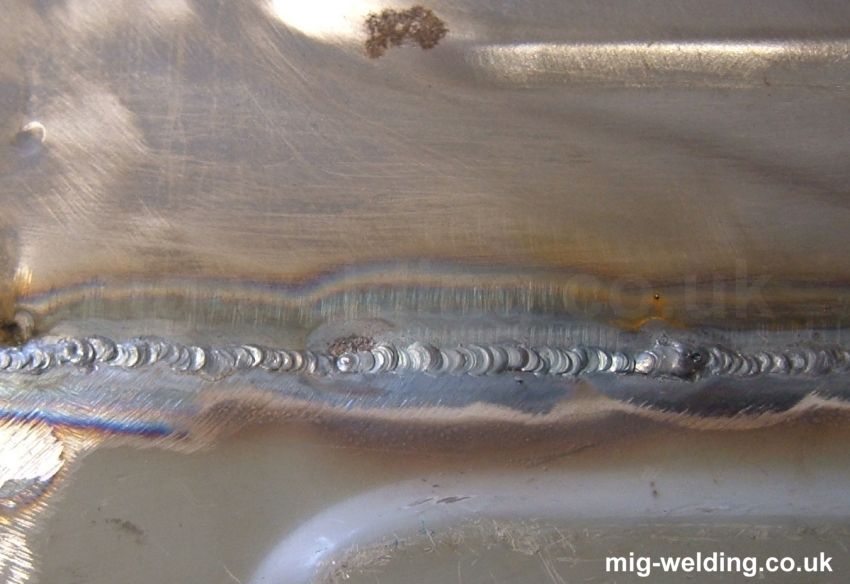Patch Panels Without Welding
An auto body repair or restoration project can often come to a sudden halt if welding is required. Welding requires extensive specialist knowledge and expensive equipment that many enthusiasts might not have. There are also instances where auto body panels cannot be repaired by welding because of fire risks. This leaves car enthusiasts with little choice but to find an alternative method to execute the repair and there are some simple fabrication techniques that provide excellent results with the need for welding. Take a panel flanging tool and create a flange around the cut area of the auto body panel. The flange needs to be deep so that the addition of a metal patch will produce a flush surface. Apply a light coating of zinc spray to all bare metal as a means of protecting against corrosion and while this is drying, find a suitable piece of scrap metal in the same gauge as the auto body panel and cut out a patch that will fit exactly into the flanged recess.

Metal patching without welding. How to Repair Rust on Your Car Without Welding. Installing a cab corner rust repair panel using panel. How do you guys weld patch panels. Proper fitment and cleanliness of your material are the most important steps in the welding processs. Without them. How to weld rust patch SECRETS REVEALED. How to fix non structual rust without welding - Duration. How to Repair Rust and Weld Body Panels. Mercedessource Tech help - You can do it yourself without the hassle and bad side affects of welding! Non structural permanent rust repair can be done without welding.
Ray Viera Aqui Esta Rar. Use a piece of cardboard to act as a template if required.
Did you know you didn’t need a welder to perform legit panel replacement? Here’s how to do a solid job at home!
We have all heard the saying “rust never sleeps,” and when it comes to vintage Mopars the battle to keep our prized possessions from getting eaten by oxidation is never ending. Twenty and 30-plus years ago, to get rid of rust you needed to find NOS or used rust-free sheetmetal. Eventually the NOS supply pretty much ran dry, and if you found a solid piece, it became way too expensive for the average enthusiast.
Finding rust-free donor vehicles at salvage yards in northern states and across the rust belt has always been an issue. Even the supply of straight, rust-free sheetmetal from the southwest has dried-up for most popular models. Fortunately, companies like Auto Metal Direct (AMD) and Eastwood have released products to help alleviate the rust issues that plague classic Mopar sheetmetal. For a northeast vehicle, our 1973 Dodge Challenger Rallye (aka The Slick Challenger) does not have a serious amount of rot—the only affected areas are in the lower part of the trunk extension panels.
That’s mostly due to having spent most of its life in a garage, away from those salt-covered winter roads. Before the availability of reproduction trunk extension panels, we had seen many restored cars missing or having incorrect-looking extension panels. It’s been one of our pet peeves. Helping cure this is AMD, which has released reproduction trunk extension panels that offer factory-fit and appearance. Most enthusiasts don’t have welding experience or the required welder and related tools. At the same time, structural adhesive technology has been used in body shops for nearly 20 years. We’ve had success gluing quarter-panels on a Challenger (Nov.
’02) and front floorpans on a ’66 Dart GT (May ’07). The Challenger still looks great without any signs of cracking or separation and the same goes for the Dart.
Other benefits to not welding include eliminating the possibility of tin corrosion at the panel joint and the prevention of possible heat warpage in the panels. Plus, without sparks there’s less chance of fire in the home garage. Sure, professional butt and spot welding can give that concourse-correct appearance, but we just wanted a nice-looking street driver that could be a local car show winner.
Once the AMD trunk extension panels and Eastwood structural adhesive and restoration supplies were in hand (along with our arsenal of tools at home), we were eager to get to work. Keep a sharp eye on our how-to pix, because the Eastwood glue system can put competent body repair in the hands of the average do-it-yourselfer!
These left and right trunk floor extensions (part No. 840-2570-L, 840-2570-R, $129.99 each) from Auto Metal Direct will replace the rotted-out sections on our E-Body project.
They feature a factory appearance and are a direct replacement made from high-quality steel with an EDP coating for rust protection. The bag of body plugs (part No. F-BPK3, $59.99) will fill in the body plug holes to keep out water, dirt, and noise. Here you can see the damage to the left-side lower extension panel. Ironically, the quarter panels on each side weren’t rotted out.



